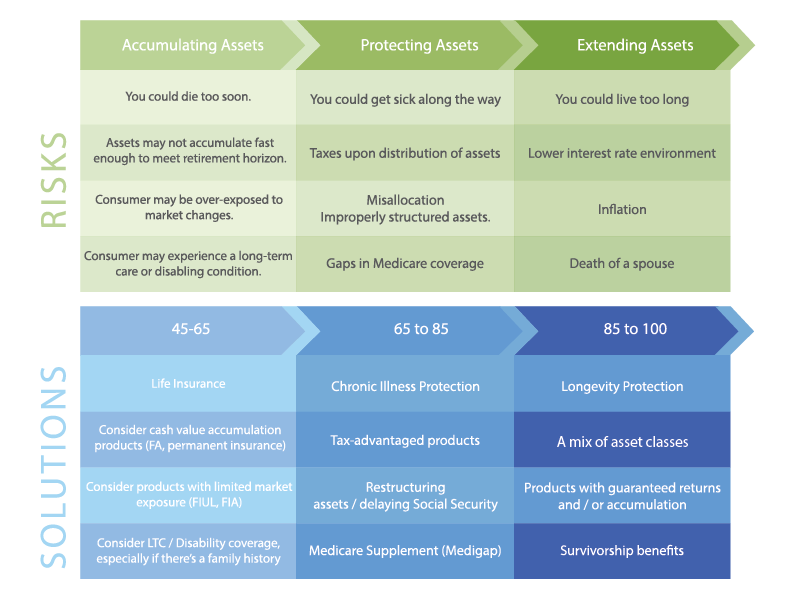Why Life Insurance?
You buy insurance to mitigate the risk of major catastrophes. Health insurance protects your finances in case you break an arm or get diagnosed with a serious illness. Home insurance protects your finances in case your house gets burned to the ground. But what happens if you die? What will happen to the people who depend on your income — such as your spouse, children and elderly parents? Life insurance protects your loved ones in the event that you pass away.
 Who Needs It?
Who Needs It?
The obvious answer: anyone who supports others (even partially) through their income should buy life insurance and name their dependents as the beneficiaries. If you’re a parent, for example, you should insure your life and name your spouse/children as your beneficiaries. That’s the simple answer. But it’s incomplete. Stay-at-home parents also need life insurance. No, they don’t earn an income, per se, but they do perform valuable tasks that are necessary to a functioning household.
If the stay-at-home parent passes away, the working parent will have to hire someone to fill those roles. How much do you think a nanny, an assistant, a day-care provider, a house cleaner, a lawn-care specialist and a tutor will cost? Yes, a lot. Life Insurance can pay for those costs. People who don’t have dependents, but who also will not be leaving an inheritance, might want to purchase a small life insurance policy to help their next-of-kin pay for the costs of their funeral and burial.
What Kinds Are There?
These are the main types of life insurance:
 Term Life – This is the standard and most-recommended life insurance policy. You buy coverage for a specific period of time (such as 10 years, 20 years, 30 years, etc.) If you pass away during that time, your beneficiaries receive a payout. The policy you purchase determines how much your beneficiaries receive. You can buy a policy for as little as a $20,000 benefit, all the way up to a $1 million benefit. Your monthly premiums are determined by the benefit amount, the number of years in your term, and the age at which you purchase the policy.
Term Life – This is the standard and most-recommended life insurance policy. You buy coverage for a specific period of time (such as 10 years, 20 years, 30 years, etc.) If you pass away during that time, your beneficiaries receive a payout. The policy you purchase determines how much your beneficiaries receive. You can buy a policy for as little as a $20,000 benefit, all the way up to a $1 million benefit. Your monthly premiums are determined by the benefit amount, the number of years in your term, and the age at which you purchase the policy.
Protect Your Family And Finances... With Life Insurance
Ease your mind, in the event of a catastrophic event, your family will be secure with life insurance.
Fill out the form below to
Learn More about Life Insurance
Whole Life – This is a hybrid insurance and conservative investment plan, though it tends to have higher premiums and lower benefits. Many financial experts, such as Dave Ramsey, are vehemently against buying whole life policies. (Salespeople often try to push people into buying whole life policies because these pay the salesperson the highest commission). These policies cover your entire life, rather than a specified term, so your beneficiaries will definitely get something when you die (assuming you’re paying premiums your entire life). However, the majority of people drop out of having a whole-life policy within the first two decades, which means their experience becomes, in essence, a very expensive de facto term life policy.
Universal Life – This is something of a hybrid between term life and whole life. It’s permanent life insurance, just like whole life, and it carries a “cash value,” just as whole life does. The primary difference between universal life and whole life is that the annual cost of insurance is based on your renewable term life insurance rate.
Fixed Indexed Universal Life – Fixed Indexed Universal Life insurance or FIUL is a category of life insurance that provides death benefit protection as well as the potential to accumulate cash value based on positive changes to equity markets. This means that FIUL has the opportunity for greater cash accumulation than traditional universal life insurance. FIUL is a fixed product with guarantees, what this means is that it has the ability to participate in market gains but, does not participate in market losses. So in the event, the market went negative in a given year the FIUL would credit zero instead of a negative. In addition to this an FIUL has a guaranteed minimum interest rate.
While most consumers traditionally think of life insurance for death benefit protection there are also living benefits that life insurance provides. One of these benefits is access to cash value within the life insurance policy. Cash value within a life insurance policy grows tax deferred and, properly structured gains within the contract can be accessed income tax-free via policy loans.
The Financial Life Risk Spectrum
Generally speaking, consumers begin or only seek financial services when there are pressing needs that arise. This, in turn, makes the view of long-term financial life difficult. Changing the course of time in which one reaches out to receive financial assistance could have potential risks and benefits.
Most consumers typically build their assets around age 45-65. The risk in this phase is that an individual could die prematurely. Life insurance will protect the consumer’s family should this happen.
As a consumer ages into retirement (ages 65-85), the risk becomes an expensive medical situation. This could exhaust retirement savings and burden family members. Here Chronic Illness Protection can help defray the risk.
Let’s say our consumer didn’t die early or face a difficult medical situation. Now they are at risk of outliving their money. Most people don’t want to have to return to work, and at this age (85-100) may not be physically able to. Longevity protection solutions can secure a guaranteed source of income that cannot be outlived.

